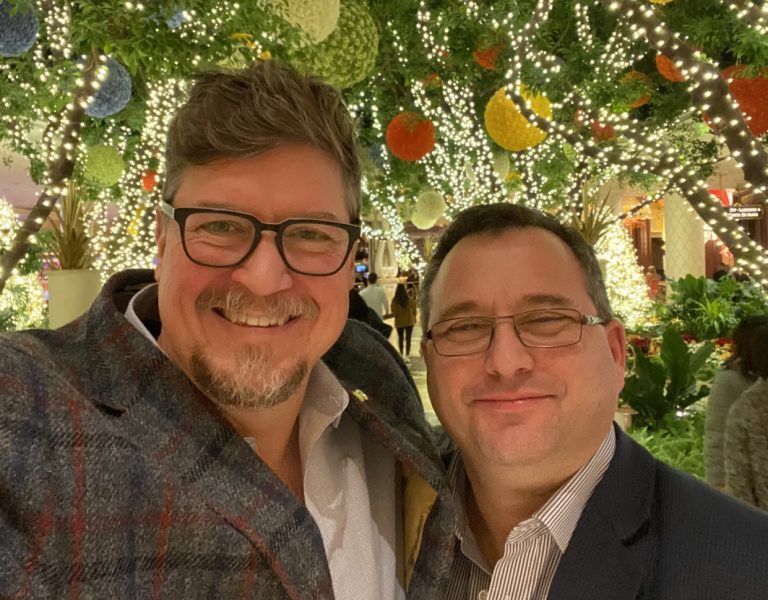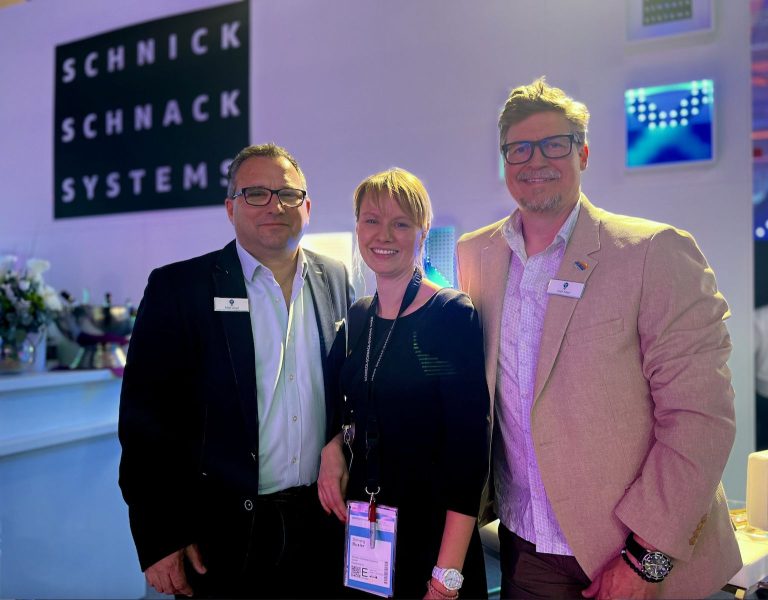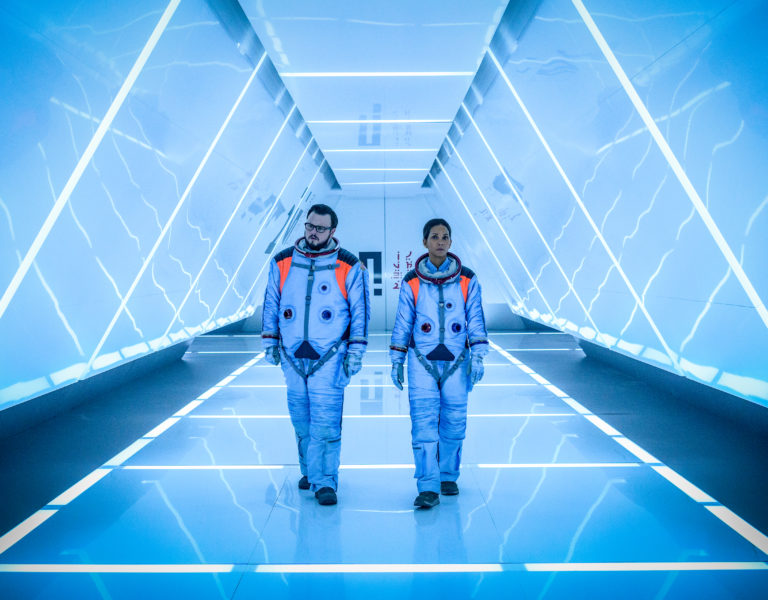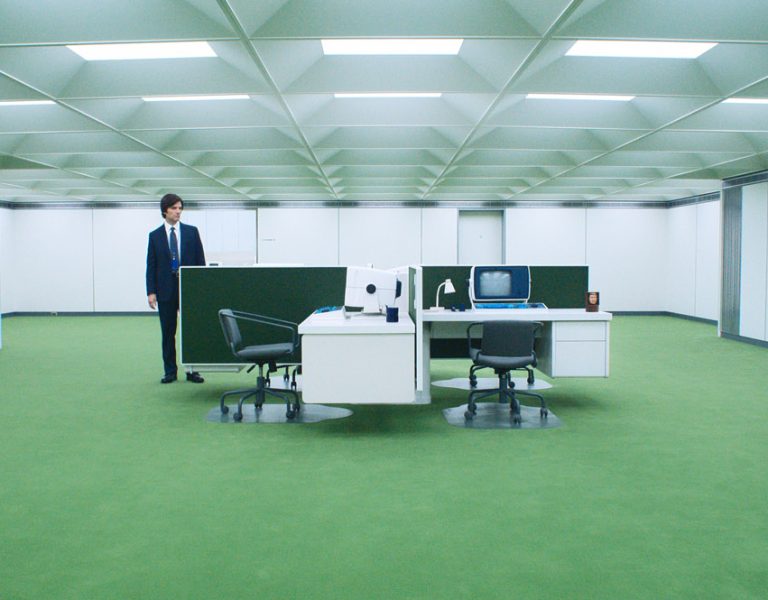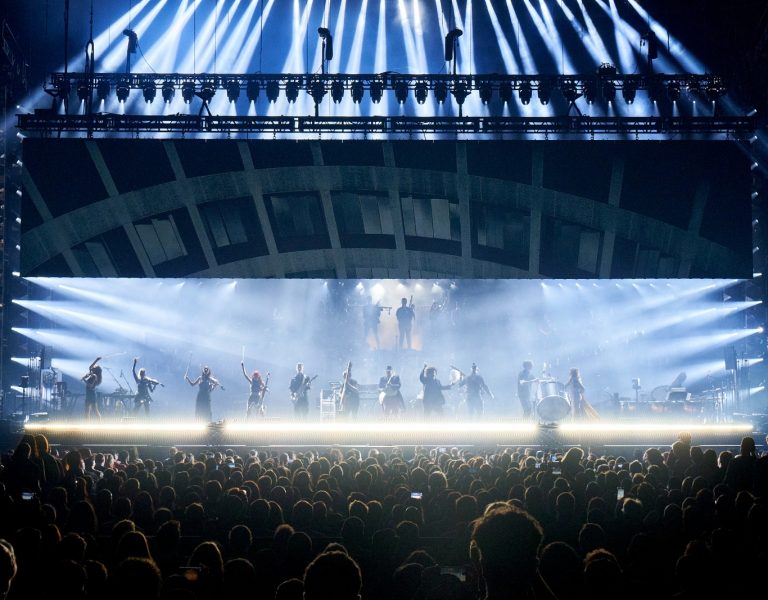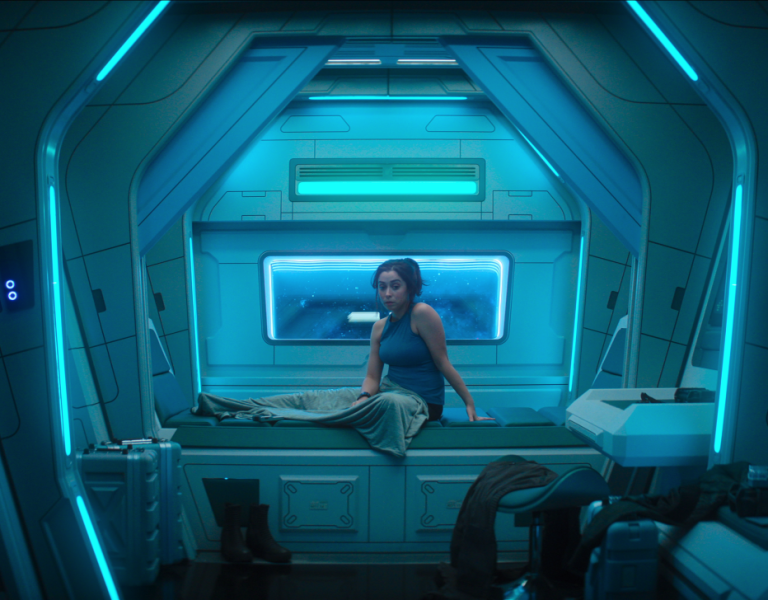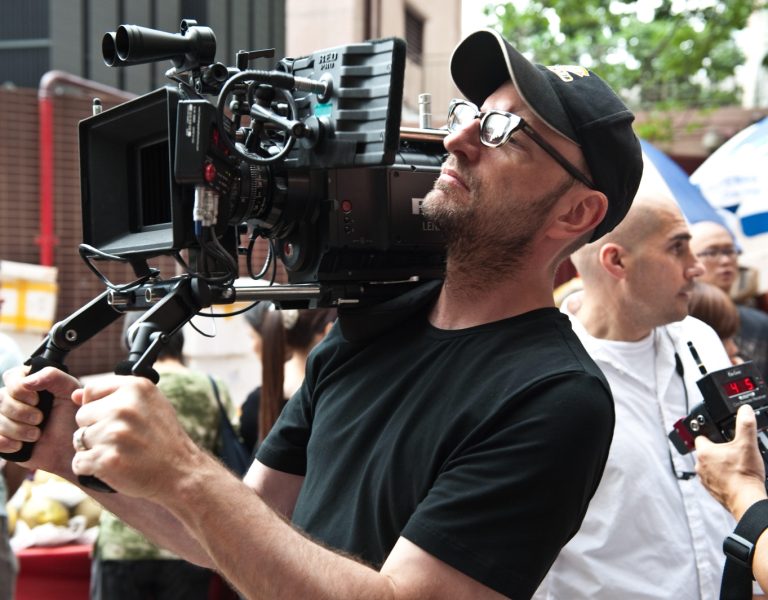Home » Features » Interviews » In the Frame »
BRIGHT FUTURE
Selected filmography (as lighting programmer unless otherwise stated):
Constellation (in post, likely release late 2023)
1899 (2022, Netflix)
Bibi and Tina (2022)
September 5 (in post, likely release 2024, Paramount; as look developer/effects programmer)
Bliss (2021, Amazon; gaffer, Slovenia Unit; effect programmer, lighting technician, Croatia Unit)
The Colony (2021; lighting technician on principal photography, gaffer on additional photography)
Dark (S2/3, 2018-2020, Netflix; lighting technician)
Softness of Bodies (2018; gaffer)
Many music videos and commercials as gaffer
What inspired you to work in the film industry and lighting specifically?
I was studying photography for my undergraduate degree and during that time, I made a lot of friends at London Film School, who invited me to join them as a set photographer on numerous film sets. It was during these experiences that I was first introduced to the vibrant world of filmmaking and felt a profound sense of belonging within the film community. Consequently, I was driven to pursue a master’s degree in cinematography.
My fascination with film as an art form began long before my university days. I could even say that I grew up in the cinema – my mother managed a cinema in Kazakhstan when I was a child, and I would often find myself there after school, watching films on loop until she finished her work. This love for cinema ultimately inspired my mother to become the first-ever film distributor in our country and she started representing 20th Century Fox in Kazakhstan. Whilst back then she wanted me to become a producer, I couldn’t imagine being in production at all. It’s fascinating to see how everything has fallen into its place over time.
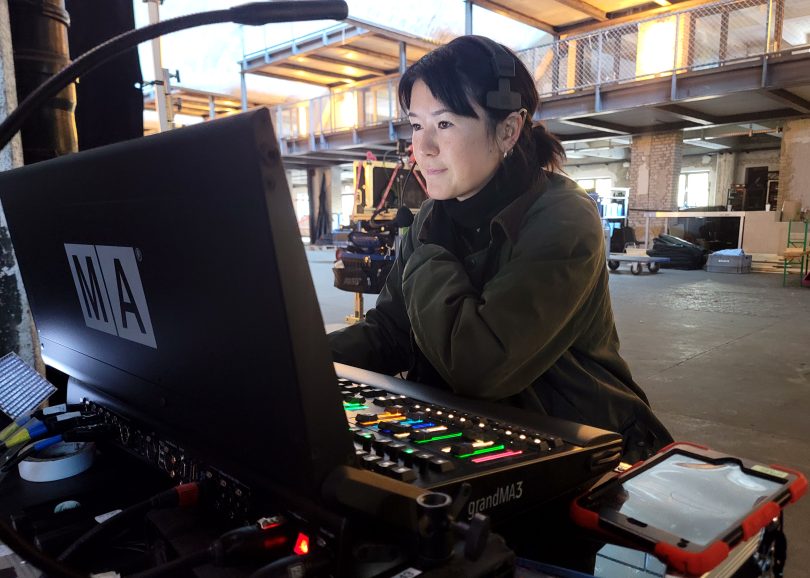
How and where did you learn the craft? What was your career progression?
During my master’s degree at MetFilm School, I discovered that I am more drawn to the light department rather than the camera department. Following the completion of my master’s programme, I embarked on my career as a lighting technician, working on various film sets. The lighting department provided ample job opportunities, particularly on larger sets, as it requires a greater number of personnel compared to the camera department. This facilitated my entry into the industry, even when I relocated to Berlin without knowing a word of German – I was able to start working on big sets from the early stages of my career. As I gained more experience as a lighting technician, I gradually envisioned myself transitioning into the role of a gaffer.
For the initial three years in Berlin, I continued to work as a lighting technician on bigger-budget sets while simultaneously serving as a gaffer on low-budget or no-budget productions. This allowed me to refine my craft and explore new ways to utilise lighting effectively. However, in 2019, I experienced a back injury on set, which led me to question the long-term sustainability of my work considering the physical aspects of the job.
Having held an interest in programming for quite some time, the COVID-19 lockdown presented an unexpected opportunity. During this period, I dedicated myself to learning how to program lights and operate the GrandMA lighting console. I delved into building festival stages in 3D environments and syncing lighting cues with rock music to create an immersive rock show experience. Programming lights for live shows proved to be a more intricate challenge, particularly in synchronising everything to the beat. Film sets are comparatively easier in this regard. I thought if I can make a rock show, I can make anything!
Who or what are your biggest inspirations or mentors?
I frequently attend concerts and festivals, immersing myself in the captivating lighting effects that beautifully synchronise with the music. Witnessing these mesmerising visual experiences fuels my creativity and pushes me to explore innovative lighting techniques.
Similarly, my love for films leads me to the cinema at least once a week, where I indulge in a diverse range of cinematic experiences. I make it a point to watch films across different genres and styles, as each one has the potential to inspire and influence my approach to lighting.
Furthermore, one aspect of our industry that truly stands out is the spirit of collaboration. It fosters a unique camaraderie that is difficult to find elsewhere. I find great joy in engaging with fellow professionals, picking their brains, and collectively finding solutions to creative challenges. The exchange of ideas and the collaborative process within our industry continually inspires and motivates me to push further the boundaries of my craft.
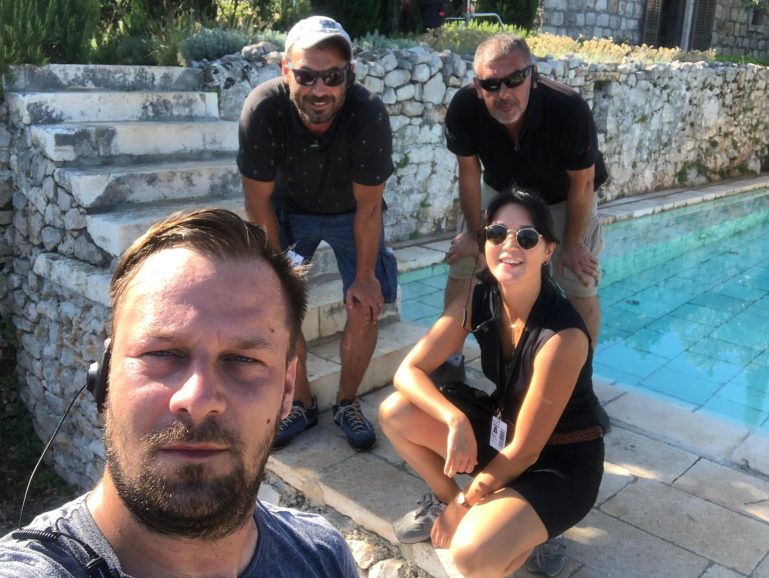
What do you wish you’d known when you first started out in the industry?
The weight of 18K lights – they are really heavy (that’s how I got myself a back injury).
As a woman in a male-dominated department, there’s often a desire to prove oneself and be seen as equally capable. All of our equipment is heavy, don’t underestimate the physical demands of handling such equipment. This taught me an important lesson about not trying to appear stronger or more capable than I actually am.
What was your big break?
In all honesty, I believe my big break is still on the horizon. While I have had significant experiences in my career, I consider myself to be at the beginning of a new chapter as a lighting programmer. It was in 2021 that I first ventured into this role, and I have been fortunate to work on several notable projects since then.
One of my first jobs as lighting programmer was on a feature film called Bibi and Tina, additionally I had the opportunity to serve as an additional lighting programmer on the Netflix series 1899 and I just completed working as one of the main programmers (there were three of us on the show) on an Apple TV+ series, Constellation, which was very complex lighting-wise; lots of different sets, intricate lighting effects, and a vast array of lights to handle. It was an immersive experience that allowed me to further enhance my skills and knowledge in the field.
I am constantly dedicated to learning, improving, and pushing the boundaries of what I can achieve as a lighting programmer. Each project presents new opportunities for growth, and I eagerly anticipate the future projects that will propel my career to new heights.
What are the key qualities of a star lighting programmer?
First and foremost, patience is an invaluable virtue. In our industry, last-minute changes are not uncommon, especially since lights can change now at the press of the button on my lighting console. With everything on set being so much faster now, everyone expects very fast responses too and being able to adapt with a calm and patient demeanour is essential. The ability to pay attention to detail is also crucial. A lighting programmer must ensure that every aspect is precisely set and coordinated to achieve the desired effects. A keen eye for detail ensures a seamless execution of the lighting design.
Effective communication is another essential quality. Given the rapid pace on set, clear and efficient communication is vital to ensure a smooth workflow and meet the expectations of the team. Being able to relay information, discuss changes, and collaborate effectively with the DP, gaffer, the rest of lighting crew, and other relevant parties is key to achieving the desired outcomes.
Planning and preprogramming play a significant role as well. I understand the importance of thorough preparation – developing a comprehensive and detailed layout on complex sets is essential, including numbering each fixture in a clearly visible manner. This allows the DP to quickly make adjustments when necessary, sometimes even during a take, ensuring efficiency and minimising disruptions.
On top of all that, staying up to date with technology and embracing new advancements with the evolving tools and techniques is crucial.
What are the fundamentals of a successful lighting programmer/DP relationship?
Concentration, attention, and proactively communicating early what effects need to be achieved and testing everything in advance.
Simplicity in interaction is key to fostering a productive relationship, particularly in complex and large-scale sets. The lighting programmer should strive to make it easy for the DP to interact with and implement their creative ideas seamlessly. Providing intuitive and user-friendly interfaces allows the DP to quickly make adjustments or experiment with lighting effects without disrupting the flow of the production.
One of the significant advantages of advanced lighting control systems is their ability to enhance storytelling through interactive lighting effects. Both the lighting programmer and DP should actively seek opportunities to contribute to the narrative through their creative choices. By aligning their efforts and finding innovative ways to utilise lighting as a storytelling tool, they can elevate the visual impact and emotional resonance of the project.
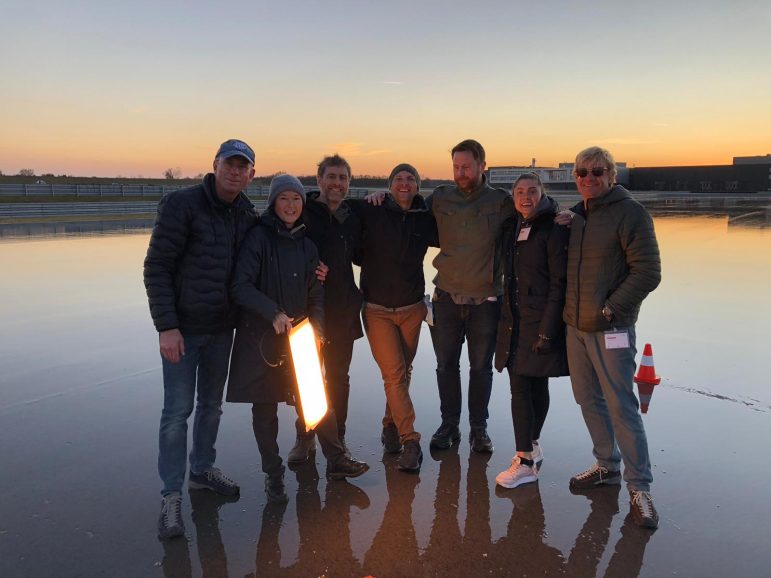
Who are your regular crew?
One aspect I appreciate about the film industry is the opportunity to collaborate with diverse groups of people. As someone fortunate enough to work in different cities, I have the pleasure of working with a range of talented individuals in various locations. It’s always exciting to experience different working dynamics and cultures while on set.
Working in new countries adds another layer of enjoyment to the process. I had the privilege of working on a film in Croatia and Slovenia once, and the crew there was truly exceptional. Their professionalism and expertise left a lasting impression on me.
Being based in Berlin, a bustling hub for the film industry, I have the chance to work with different people regularly. These experiences often lead to recommendations and introductions to new crew members, expanding my network of talented professionals. I particularly enjoy the opportunity to creatively grow alongside up-and-coming directors of photography. One of my frequent collaborators is Elias Köhler. We have worked on numerous projects together over the last six years and witnessing our creative journey and the evolution of our work is always a fascinating experience.
Moreover, I am fortunate to have the opportunity to work with my husband, Markus Förderer (ASC BVK). In an industry as demanding as ours, it can be challenging to maintain personal relationships due to extended periods of separation and the demands of different projects. Working together allows us to not only pursue our shared passion but also strengthens our bond as a couple. We consider ourselves extremely lucky for every chance we get to collaborate professionally.
How would you describe your creative process?
My creative process is adaptable and flexible, tailored to the specific project and the vision of the director of photography. Collaboration is at the core of my creative process. I strive to understand the DP’s vision and goals for the project, ensuring that their artistic intentions are fully realised through lighting. Open and clear communication is key during this phase, as it allows us to align our ideas and establish a shared creative direction.
Once I have a thorough understanding of the project’s objectives, I embark on the process of translating concepts into tangible lighting designs. This involves brainstorming, researching, and experimenting with various lighting techniques and effects. I explore different possibilities and evaluate how each approach can contribute to the overall visual narrative in a simple and elegant way.
Do you have a signature technique/trick?
I firmly believe in the importance of thorough homework and meticulous planning before stepping onto the set. While I wouldn’t define it as a specific signature technique or trick, this dedication to preparation sets the stage for successful and efficient lighting execution.
One aspect of my preparation involves creating a detailed lighting plan or layout. This involves mapping out the positions and characteristics of each light fixture, taking into account factors such as colour temperature, intensity, and direction. By having a well-organised plan in place, I can efficiently execute the lighting setup on set, and quickly react to changes on the day- saving valuable time and enabling smoother production workflow.
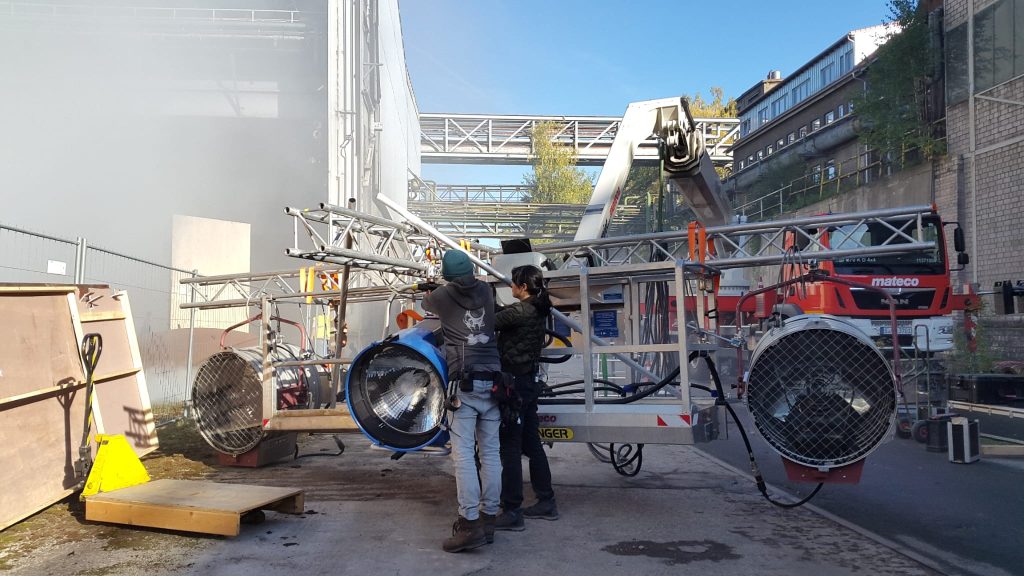
What is your favourite memory of working on a production?
I was a gaffer for additional photography for the film The Colony, that my husband Markus Förderer shot. The majority of the film was already completed, but there was a scene that needed to be reshot. It was right after the COVID lockdown and the actor was still concerned about working on set with a large number of people, considering the circumstances. Markus and I offered a solution: we proposed shooting the scene at our house, just the two of us, plus the actor (and his wife came to help).
During the principal photography phase in 2018, we had captured the film’s footage using elaborate lighting setups, incorporating various elements like fog and water, on locations in Germany and sound stages in Berlin and Munich. So now we had to recreate one of the scenes within the confines of our living room. We purchased a small fog machine, a small fan, and utilised a few LED lights that we had available and no green screen at all. It was remarkable to witness the power of creativity and resourcefulness as we achieved such an immersive result with a small crew and minimal equipment. The scene seamlessly blends into the overall film, and if you weren’t aware, you would never suspect that it was shot in our living room.
Which production was the most challenging and why?
Every production presents its own unique challenges, and I find that aspect to be one of the most exciting aspects of my work. It’s important not to make things too easy or simply rely on pressing cue buttons, as that would make life on set quite dull.
Out of very recent experience that I could highlight – on the show that I just completed. We shot first some scenes on locations in the middle of January, where the weather was extremely cold and daylight was limited. Some setups could not be achieved on location, therefore we shot the rest of the scenes on the video wall stage in Berlin. The challenge for me was to match the lighting and effects of the scenes that were shot on locations, but now in the controlled environment of the video wall stage. This involved recreating the lighting conditions and seamlessly blending the lighting fixtures with the light emanating from the video wall to recreate the look and feel of what we had captured on location.
It was an incredible experience to witness the transformation as we recreated the day exterior scenes and meticulously adjusted the lighting fixtures to achieve the desired visual result. The level of detail and precision required to seamlessly merge the practical lighting and the video wall lighting was a significant challenge. It was a rewarding experience that pushed me to expand my skills and capabilities as a lighting programmer in this virtual environment.
What is your favourite kit?
I love to be mobile – it is essential for me to move around freely and be present at any part of the set without being restricted by cables. My go-to setup consists of a GrandMA3 compact on a magliner, with a wireless DMX transmitter box, mounted on extendable pipe to transmit better signal and everything is powered by an Instagrid 230V portable battery. This device is truly amazing as it allows me to power my entire station throughout the shooting day. It’s like having a portable wall socket with me wherever I go. The versatility and reliability of the instagrid are incredibly useful, not only on set but also on location shoots.
What new products have you been impressed by and how do you keep up with the latest innovations in lighting?
I’ve been particularly impressed by the advancements in wireless technology within the lighting industry, like the integration of built-in CRMX (wireless DMX) in new LED lights. This feature eliminates the need for additional external transmitters and receivers, streamlining the setup and making the entire system more efficient. One product that has impressed me in this regard is the Luminradio Stardust, which offers an incredible eight wireless universes in a compact DMX box transmitter. It’s truly phenomenal to see how far wireless technology has come.
To stay up-to-date with the latest innovations in lighting, I attend trade shows and various industry events. These events provide an excellent platform to discover new products, connect with industry professionals, and gain insights into emerging trends. The lighting industry is constantly evolving, with lights becoming smaller and more powerful, wireless technology offering better range and capabilities, portable batteries delivering extended operating times and many other things improving.
What obstacles do you face in your career and how do you overcome them?
One significant challenge I faced early on was the perception that working in the light department was not a suitable choice for me as a woman. However, I remained determined and committed to pursuing my passion for lighting.
Over time, as I gained experience and demonstrated my skills and dedication, people began to take me more seriously. I am delighted to witness a positive shift in the industry, with more women working in lighting roles. This inclusivity is liberating and serves as a testament to the growing recognition of diverse talents and perspectives within the field.
To overcome obstacles and create opportunities for myself, I am grateful for the support and trust of fellow crew members who took a leap of faith and provided me with opportunities to showcase my abilities and build confidence. Building relationships and networking within the industry has been instrumental in overcoming challenges. By connecting with like-minded professionals, I have been able to expand my professional network, which has opened doors to new opportunities.
Additionally, continuous learning and skill development have played a vital role in overcoming obstacles. I consistently seek to enhance my knowledge and stay up-to-date with the latest industry trends and technologies. This proactive approach allows me to adapt to changing circumstances and bring valuable expertise to every project I undertake.
What are the biggest recent changes you have seen in the industry?
The use of LED walls in productions has revolutionised the way we approach lighting. When utilised effectively, these interactive lighting environments can yield stunning results. LED walls offer dynamic backgrounds and lighting effects that can be seamlessly integrated into the scene, creating immersive environments and enhancing storytelling.
Another significant change is the widespread adoption of “smart lighting fixtures”. These fixtures are not only controllable through traditional DMX boards but also through smartphones and dedicated apps. This integration of technology has empowered lighting professionals to have more flexibility and control over lighting setups, even on smaller-scale projects. With the convenience of controlling lights from a smartphone, creative experimentation and adjustments can be made quickly and efficiently, further enhancing the artistic vision of a production. As technology continues to evolve, I am excited to see how these changes will further shape the industry and inspire new possibilities in lighting design.
What advice would you give aspiring lighting programmers and gaffers?
- Plan and communicate as much as possible during prep
- Prep with your crew and every other department that overlaps with lighting (props, costumes, art department)
- Have a detailed layout and numbering system
- Test everything
- If running on wireless, have a wired back-up option
- Treat your crew with respect, you are nothing without them
What inspires you outside of the world of film?
In my free time, I actively engage in photography and I am a part of an art collective called Stattlab in Berlin. We have our own studio with an analogue darkroom, and I find immense joy in the process of printing photographs. For me, printing is even more fulfilling than capturing the images themselves. It’s a magical experience to expose the paper to light, work with shadows and contrast, and witness the image gradually emerge before my eyes. I consider it a form of meditation, and I often spend hours meticulously crafting a single print.
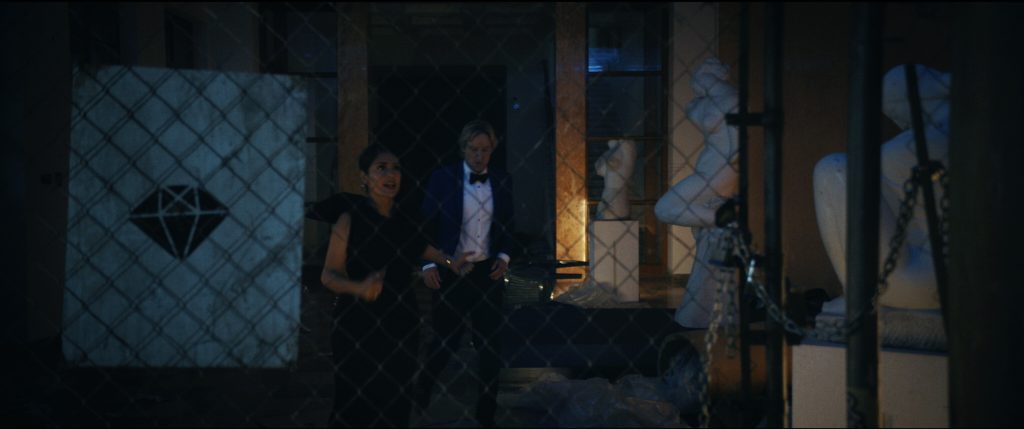
DP Markus Förderer says…
“Julie is very focused on executing lighting effects in the fastest, most efficient manner. In our collaboration, we developed a shorthand and we love exploring new ways to utilise dynamic lighting effects that visually elevate the story.”
DP Elias C. K. Köhler says…
“Julie is an exceptional collaborator, who constantly brings a positive and creative approach to every project. Her contributions and creative input have made a significant impact on our work. Working with Julie is always a pleasure, as she consistently goes above and beyond to deliver outstanding results.”
Lighting programmer Oliver Kühne says…
“In tense situations, when you really get to know people, Julie stays always calm and focused on solving the problem and adapts quickly to new circumstances.”







